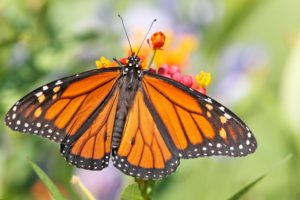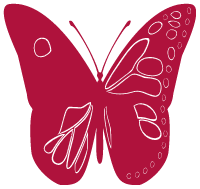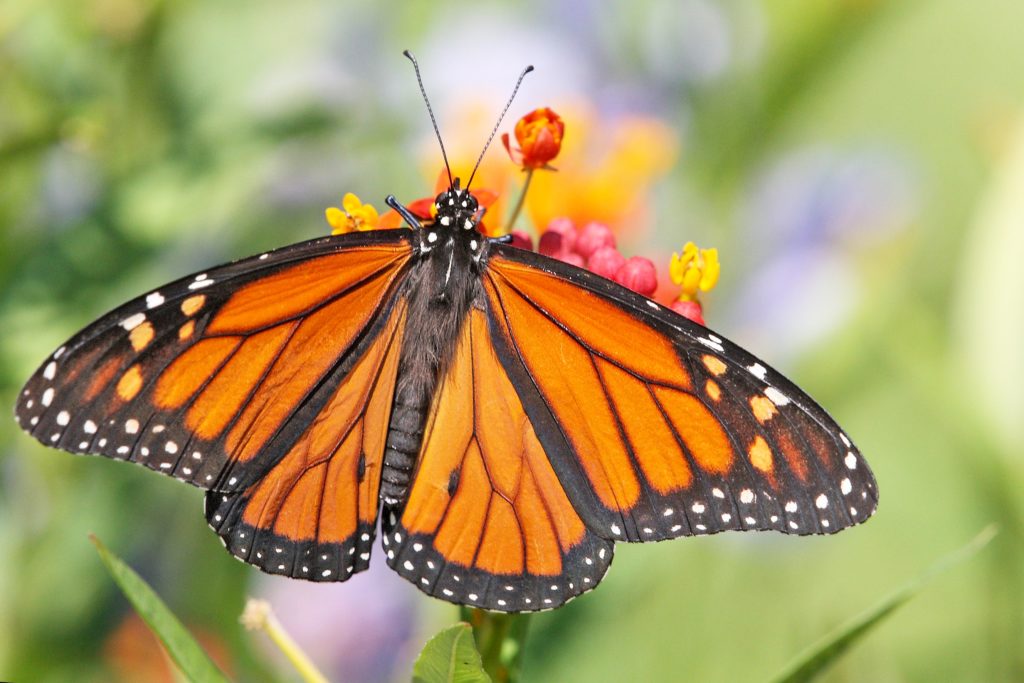
Where does the Monarch butterfly get its name from?
The monarch butterfly gets its name from its distinctive markings, which resemble a monarch’s royal regalia or crown. The butterfly’s wings are bright orange with black veins and borders, and the forewings’ tips have white spots resembling small pearls. The overall effect of these markings is similar to the ornate robes and crowns were worn by monarchs throughout history, hence the name “monarch butterfly”.
When was the Monarch butterfly discovered?
The monarch butterfly is a well-known species of butterfly that has been known to humans for centuries, so it is difficult to pinpoint an exact date or time when it was “discovered.” However, the first scientific description of the monarch butterfly was made in 1758 by the Swedish taxonomist Carl Linnaeus, who gave it the Latin name “Papilio (now Danaus) plexippus.” Since then, the monarch butterfly has become one of the most well-studied and iconic butterflies in the world, known for its long migrations, striking appearance, and important ecological role.
How many Monarch butterflies are there?
It is difficult to estimate the exact number of monarch butterflies that exist in the wild, as their populations can vary greatly from year to year and from one region to another. However, according to some estimates, the total population of monarch butterflies has declined significantly in recent years due to habitat loss, climate change, and other factors.
In the late 1990s and early 2000s, the population of monarch butterflies in North America was estimated to be around one billion individuals. However, this number has declined sharply in recent years, with some estimates suggesting that the population has fallen by more than 90% since the 1990s. As a result, monarch butterflies are now considered a species of special concern in many regions, and efforts are underway to protect and conserve their habitat and populations.
Are Monarch butterflies endangered?
The monarch butterfly is currently facing significant challenges to its survival, including habitat loss, climate change, pesticides, and other factors. As a result, the population of monarch butterflies has declined sharply in recent years, and the species is now considered at risk of extinction in some regions.
However, many conservation efforts are underway to protect and restore monarch butterfly habitats, including planting milkweed and other nectar-rich plants, reducing pesticide use, and creating protected areas for monarchs to breed and migrate. These efforts have shown some success in boosting monarch butterfly populations, and with continued conservation efforts, it is possible that the monarch butterfly can be saved from extinction.
However, it is important to note that the fate of the monarch butterfly ultimately depends on the actions of humans and our ability to protect and conserve their habitat and populations.
Why are Monarch butterflies endangered?
Monarch butterflies are considered a threatened species due to several factors, including habitat loss, climate change, pesticide use, and disease.
One of the main threats to monarchs is the loss of milkweed habitat. Milkweed plants have been eliminated from many agricultural and urban landscapes through the use of herbicides, and the conversion of natural habitats into agricultural fields and urban areas has also reduced the availability of suitable breeding and feeding grounds for the butterfly.
Climate change is another major threat to monarch populations, as changes in temperature and precipitation patterns can affect the timing and availability of milkweed plants and other important food sources. Extreme weather events such as droughts and heatwaves can also significantly impact monarch populations, particularly during migration.
Pesticides, including neonicotinoid insecticides, have been shown to have negative effects on monarchs and other pollinators. These chemicals can harm monarchs directly by interfering with their nervous systems and impairing their ability to fly, navigate, and reproduce; and can also indirectly impact their food sources by killing off the insects that they rely on for pollination.
Finally, the disease is also a significant threat to monarchs, as they can be susceptible to infections by a number of pathogens and parasites. One such disease, called OE (Ophryocystis elektroscirrha), is a protozoan parasite that infects monarch caterpillars and adults and can cause deformities, reduced lifespan, and other negative effects.
Is there such a thing as a Monarch butterfly sanctuary?
Yes, several monarch butterfly sanctuaries and protected areas have been established to help conserve the species and its habitat. These sanctuaries typically provide a safe and protected environment for monarch butterflies to breed, feed, and migrate and often include large areas of milkweed and other nectar-rich plants that are essential to the butterfly’s survival.
One of the most well-known monarch butterfly sanctuaries is the Monarch Butterfly Biosphere Reserve in central Mexico. This reserve covers an area of over 200 square miles and is home to millions of monarch butterflies that migrate there each year from Canada and the United States. In addition to this reserve, many other protected areas and conservation initiatives across North America are focused on protecting and restoring monarch butterfly habitats, including parks, gardens, and other protected areas.
Are Monarch butterflies poisonous?
Monarch butterflies are not poisonous, but they are known to be distasteful and potentially harmful to predators due to the chemicals found in their bodies. Monarchs, like many other butterflies, contain cardenolides, a type of toxin that they acquire from the milkweed plants they feed on during their larval stage. These toxins are stored in the butterfly’s body and can make them unpalatable or even toxic to predators such as birds.
Monarchs use their bright orange and black coloration to advertise their unpalatability to potential predators, a strategy known as aposematism. When threatened, monarchs will often flutter their wings and display their bright colors to deter predators from attacking them.
It is worth noting that while monarch butterflies are not poisonous to humans, consuming them or any other wild-caught insects is not recommended, as they may contain harmful chemicals or parasites.
What do monarch butterflies eat?
Monarch butterflies feed on the nectar of flowers and other sources of sugars, such as tree sap and rotting fruit. As caterpillars, they feed exclusively on the leaves of milkweed plants, which contain the toxic compounds that the butterfly uses for defense against predators.
Monarchs are highly dependent on milkweed plants, as they lay their eggs on the underside of milkweed leaves, and the caterpillars rely on the plant as their sole food source. Adult monarchs, on the other hand, have a more varied diet and can feed on the nectar of a wide variety of flowering plants.
Because of their dependence on milkweed plants, the conservation of monarch butterflies has been closely tied to preserving and restoring milkweed habitats. Efforts to plant milkweed and other native flowering plants in urban and agricultural areas have been shown to help support monarch populations and promote their recovery.
How long does a Monarch butterfly live?
The lifespan of a monarch butterfly varies depending on its life stage and environmental factors. Adult monarch butterflies typically live for two to six weeks, while monarch caterpillars usually live for two to four weeks before transforming into a pupa. Monarch pupae, or chrysalises, typically develop for around 10 to 14 days before emerging as adult butterflies.
However, there is a ‘Super generation’ of Monarchs who are migrating from their homelands to the Coast of California or Mexico. This Super Generation lives up to 7 months. After overwintering in the sanctuaries, they fly back home and start the first generation of Monarchs in the new year.
What is the life cycle of a Monarch butterfly?
The life cycle of a monarch butterfly consists of four stages: egg, larva (caterpillar), pupa (chrysalis), and adult butterfly. Here is a brief overview of each stage:
- Egg: The female monarch butterfly lays eggs on milkweed plants, which are the primary food source for monarch caterpillars. The eggs are small, white, and shaped like a dome.
- Larva (caterpillar): After about 4-5 days, the eggs hatch into caterpillars. The caterpillars go through five instars, or stages, over the course of 10-14 days. During this time, they eat milkweed leaves and grow rapidly.
- Pupa (chrysalis): When the caterpillar is fully grown, it attaches itself to a surface and forms a chrysalis. Inside the chrysalis, the caterpillar transforms into a butterfly over the course of 10-14 days.
- Adult butterfly: Once the butterfly has fully developed, it emerges from the chrysalis and pumps fluid into its wings to expand them. The butterfly then flies away to mate and lay eggs, starting the life cycle over again.
Overall, the life cycle of a monarch butterfly takes about 4-6 weeks, although it can vary depending on environmental conditions and other factors.
Monarch butterfly spiritual meaning?
The monarch butterfly is associated with spiritual symbolism and meaning in many cultures. Here are a few examples:
- Transformation: The monarch butterfly’s metamorphosis from a caterpillar to a beautiful winged creature is often seen as a symbol of personal transformation and spiritual growth.
- Rebirth: The cycle of life that the monarch butterfly goes through, from egg to caterpillar to cocoon to butterfly, is seen as a symbol of rebirth and renewal.
- Resilience: The monarch butterfly’s annual migration, which covers thousands of miles and crosses international borders, symbolizes resilience and endurance in the face of adversity.
- Freedom: The monarch butterfly’s ability to fly and move freely is seen as a symbol of liberation and freedom.
- Connection to the divine: In some cultures, the monarch butterfly is believed to be a messenger from the spirit world or a symbol of the soul’s journey after death.
Overall, the monarch butterfly is widely regarded as a symbol of beauty, transformation, and spiritual significance.

